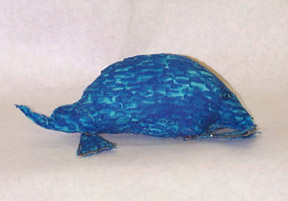Water By Monica Anand |
|
| Hi Ms. O’Sullivan!! I am writing this paper to tell you about the water mole. But in order to be able to explain to you about a mole, I better tell you what a mole is, huh? Ok well a mole is sort of like the word a dozen. When one says, "a dozen cannon balls were shot at the ground," people know that person means 12 balls, and it also means 1*10^6 grams (or whatever the mass of the cannon balls is). The word dozen means the number of that substance, and the mass of it. A mole is the same thing, except it has a different quantity. The word mole describes the quantity of particles and a quantity of mass also. The particles are measured in atoms. Every molecule and element has 6.02*10^23 Atoms in them. This expression, 6.02*10^23, is one mole. Therefore every molecule and element has one mole. I think I have explained enough, now time for the interesting stuff about water! A water mole is, of course, 6.02*10^23 atoms, and it’s mass is 18 grams. The oxygen atom in the water molecule is polar. This means that is has a higher electronegativity than the hydrogen atoms. This makes water a good a good solvent because many ionic compounds dissolve in water. It is because of this that the hydrogen and oxygen atoms of water are joined by polarized covalent bonds. The polarization of the molecule allows water molecules to enter hydrogen bonds with other water molecules and with other polarized molecules. Hydrogen bonding is the attraction of hydrogen in one molecule to the oxygen in another, or any other polarized atom. The results are: water is liquid at room temperature, it has a boiling point, and it is a good solvent. Hydrogen bonds form "bridges" that stabilize large characteristics of water. Each water molecule can be involved in up to four hydrogen bonds. Water molecules, through their hydrogen bonds, show cohesion. One effect of cohesion is the surface tension that allows water droplets to "bead up." A second effect of hydrogen bonding is the special nature of ice. When water is in its liquid form, there are some hydrogen bonds present, but not every molecule has to have that 4-bond rule. This allows the molecules some freedom of movement. As ice cools to freezing, the water molecules form the maximum number of hydrogen bonds and a stable open network of molecules—of ice crystals—forms. The water molecules in ice are held at regular distances from each other. As the ice is reheated, some of the hydrogen bonds are broken, and the network becomes collapsed and distorted. The ice is actually less dense than the liquid because in the liquid they are more closely packed. This explains why ice floats. Did you know…
|
